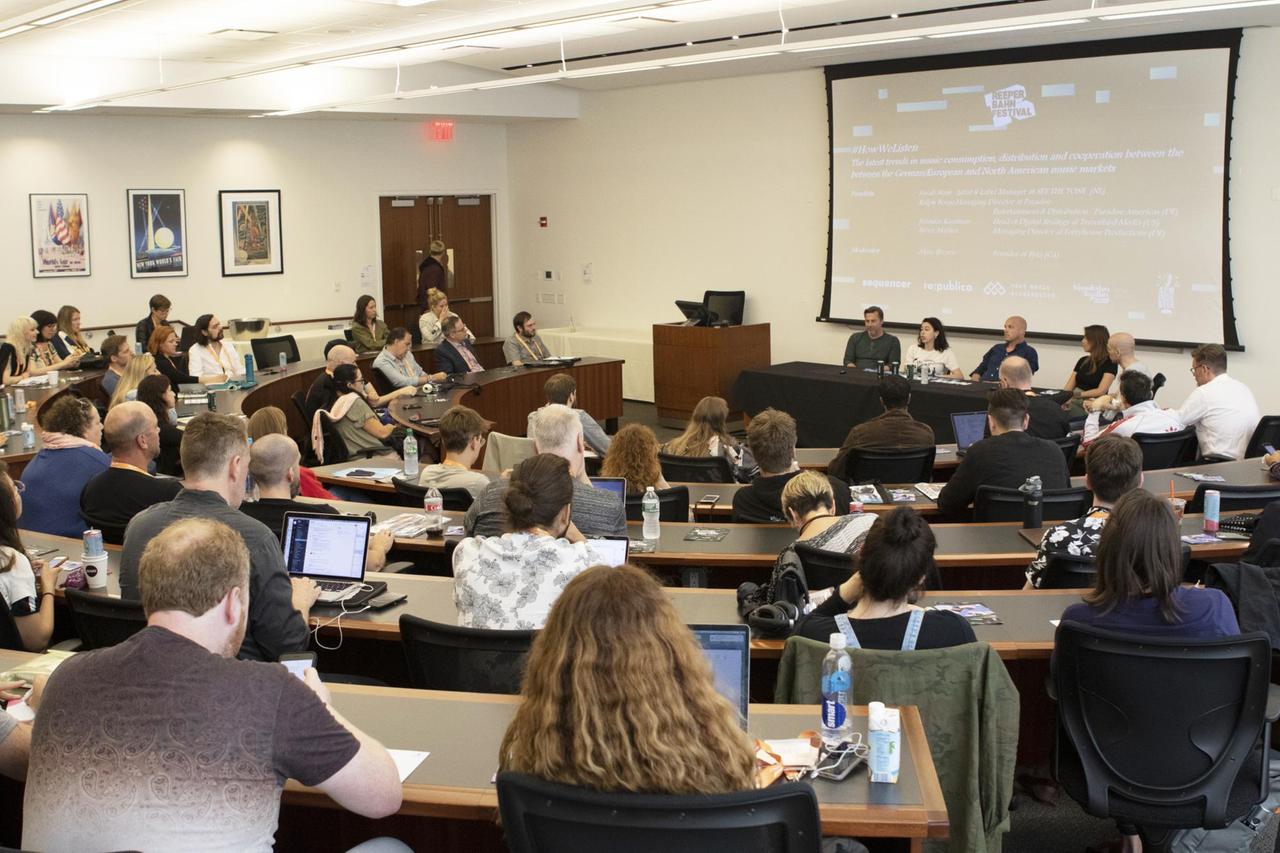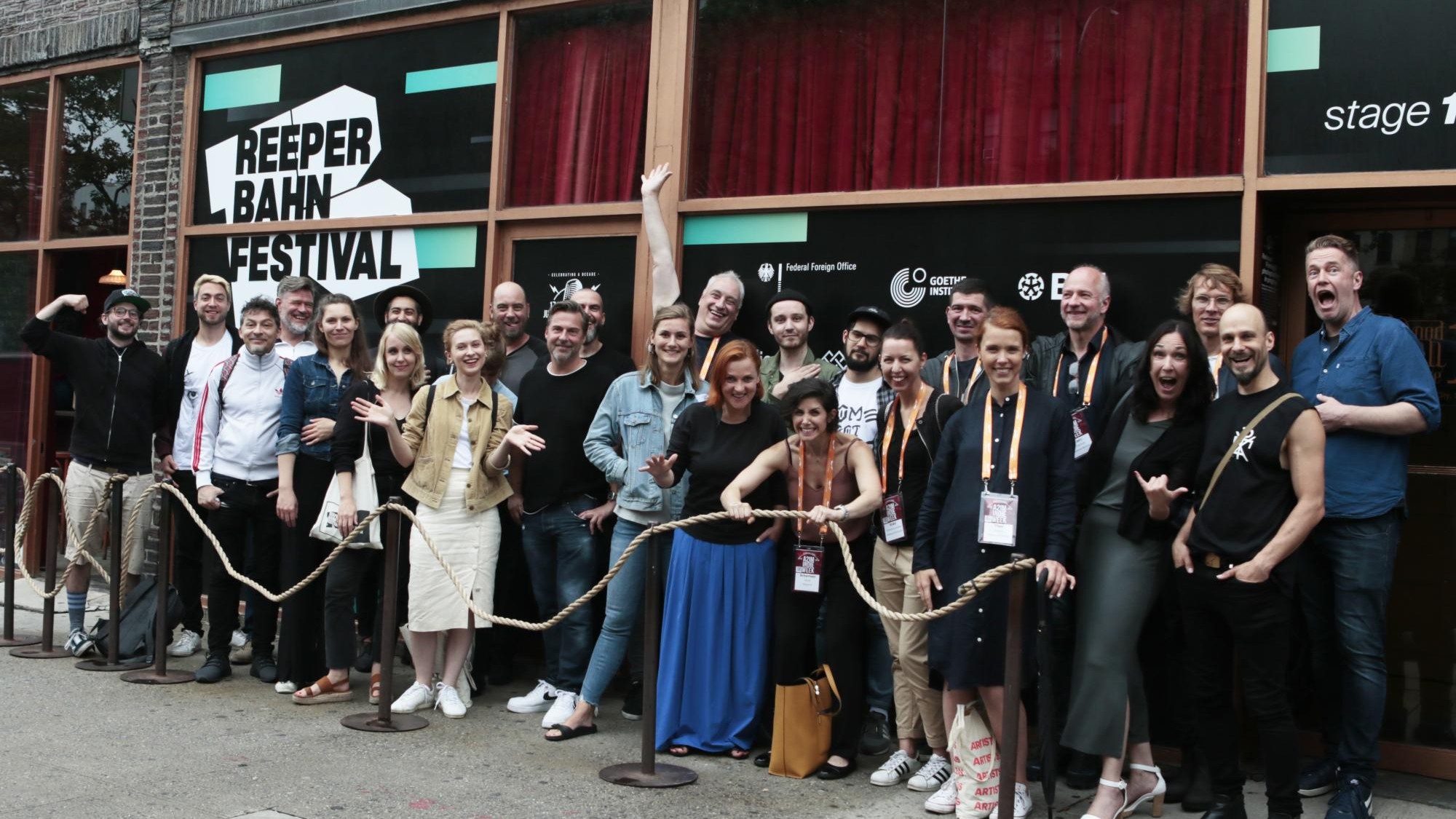–
Anja Buchmann: What is the industry interested in 20 years after Napster?
Christopher Reimann: To get straight to the point: nobody is really interested in the physical market anymore. True, there was a panel for plates. But nobody talks about CDs anymore. And if you believe the current market forecasts shown here, then downloads will soon be history. What interests the industry is the large growth market: streaming.
Buchmann: But it is the case that large streaming providers such as Spotify are still in the red. To what extent is there money in the streaming economy? Especially when we look at the independent music industry.
First define a goal
Reimann: The conference program here has shown that there is no such thing as a one-size-fits-all model for success. But the industry is beginning to take advantage of the data that music listeners leave behind on the Internet – when they visit websites or when they stream music.
Sarah Stam works in the Netherlands. Her company ‘Set The Tone’ advises labels that focus on the internet. She explains how to harness data:
“First of all, you should define a goal: As an artist or as a music label, do I want to open up a new market, for example? For example, by targeting a new age group or by wanting to grow abroad. If the latter is the case, you look at the data, that are generated in social media. Then you can see, for example, whether the music is also heard in Hamburg. If that is the case, the next step should be to try to organize concerts there, possibly record a song together with a German artist, or you try to find a local label that specializes in the local market.”
Reimann: That’s what Sarah Stam says. And that too: “Of course, we also transmit streaming services to users where we are in the world when we listen to a song.”
Reach more people than ever before
Buchmann: The evaluation of metadata is one thing to make a profit from the new music industry in addition to pure streaming. What else is there?
Reimann: A second important point is the so-called catalogue. Publications that are more than 18 months old are referred to as a catalogue. Again Sarah Stam:
“New albums used to make a lot of money in a short amount of time, but a little later after the release, hardly anyone was interested in them. But streaming services and social media can now reach more people than ever before. And the algorithms of streaming services are designed that way , that they also suggest records to people that are four or five years old, according to their tastes.”
Not every good business idea becomes a success
Buchmann: In the pop world, people like to paint in black and white. The indies used to be the good guys, the ones with the art. The big majors, on the other hand, are the bad guys, those with commerce. When I hear that now – evaluating data, i.e. spying on the audience – it doesn’t sound like the good old indie world at all anymore.
Reimann: The independent industry and the majors are definitely converging. Sound-wise anyway. But also on business. Another panel showed that here at Indie Week.
 –
––
Ryan Leslie was invited, a singer who is also a successful businessman. He developed Superphone. And it works like this: As an independent artist, Ryan Leslie asked his fans to give him their cell phone numbers, and they did – and then he used it to communicate directly with his fans. At a time when other artists were still adding up their pennies from streaming services, Leslie knew from direct contact which of his fans were willing to put down $1,700 for a New Year’s concert with him. Today, Leslie claims to be making more money than when he was a major. He then sold the business model to a big label.
But of course you have to say: Not everyone develops a business idea that then has such great success.
Shortage of media partners as a major problem
Buchmann: Numerous German label representatives have also traveled from Germany to New York for the A2IM Indie Week. Were they able to take new impulses home with them?
Reimann: The German delegation, as it is called here, also includes Tobias Lampe. He runs the label HFN Records. For him, the Indie Week was above all an opportunity to maintain existing contacts and make new ones. The panels had shown him that the industry was facing the same problems worldwide. In his eyes, this includes: “The ever-changing market, so to speak, from physical to downloads to streaming, along with a lot of piracy. And the shortage of media partners is also a very, very big problem for us, because of course there are hardly any magazines left, the music -Do reviews.You have to, I would say, dance at a lot of weddings at the same time in order to generate a lot of attention, but that really isn’t as much attention as you used to be able to achieve with far fewer resources .”
Buchmann: There was music too. The Reeperbahn Festival organized an evening as part of Indie Week.
 –
––
Reimann: Yes, bands like Gurr from Berlin, the Leoniden from Kiel or Mira Lu Kovacs from Vienna played there. The bands and their managers saw the evening as an opportunity to present themselves abroad. The fact that this is even possible is due to the Reeperbahn Festival. All delegates were able to get a travel allowance because the festival itself is partly financed from public funds. This year there was additional support from “Wunderbar Together”, an initiative by the USA and Germany to celebrate the so-called Germany Year.
Cultural policy promotes the creative economy
As a member of the Committee on Cultural and Educational Policy, Barbara Hendricks from the SPD was at A2IM. But this funding was a one-time thing, and she made that clear:
“Of course we can’t support something like that in the long run. The Germany Year is, as the name suggests, limited to one year. And we bring a lot of creative artists together, also in the expectation that this will actually result in cooperation and possibly even joint business .”
 –
––
Reimann: This does not mean that funding will be completely eliminated next year, but that it may be lower. The fact that funding is necessary at all can be interpreted in two ways: cultural policy has recognized that the creative economy is an industry that is worthy of funding. On the other hand, it can be said that even 20 years after Napster, the independent music industry is not necessarily on a stable footing.
–

